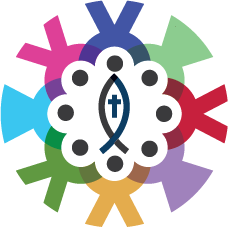The Role of Social Media in Reducing Stigma and Discrimination
It is individuals who are leading the way in bringing conversations about mental health into public online spaces and social-media channels are increasingly used by anti-stigma programmes to share their work and influence public attitudes. For example: New Zealand’s ‘Like Minds, Like Mine’ Facebook page entitled ‘Stigma Watch’ allows members to post and discuss media articles of concern because of their stigmatising content, thereby providing a space for conversation; ‘Beyondblue’, Australia’s national depression and anxiety initiative, uses the hashtag #SmashTheStigma whenever stories of hope and recovery are posted, and has led to others using the hashtag to share anti-stigma efforts.
Although social media encompass many different channels, we have selected case studies that illustrate how the micro-blogging platform Twitter has been used to challenge stigma. Twitter is an internet application that allows 140-character messages to be publicly sent and quickly shared across many users. Interaction on Twitter about mental health features a dynamic blend of education, contact and protest, with personal narratives at their core.
A striking illustration of how social media can be used by people with mental health problems to challenge stigma is a protest on Twitter that took place in September 2013. Thousands of people, offended by the ‘mental patient’ Halloween costume advertised on the website of the national supermarket Asda’s George clothing collection, sent tweets to show their disapproval. The topic ‘went viral’ with tweets passed rapidly and across networks. The story was the lead item on national news the next day with mainstream media sourcing their information from Twitter. Asda and other retailers removed the costumes from sale, apologised, and made donations to England’s ‘Time to Change’ anti-stigma campaign. During the protest, a #mentalpatient hashtag was created by people with lived experience. They posted photographs of themselves (‘selfies’) alongside text such as ‘this is what a real mental patient looks like’, to satirise the costume. The hashtag, which creates a searchable string, was used 6694 times in 24 hours.
The protest was initiated by individuals on Twitter and later backed by campaigning organisations. They amplified the conversation and exploited journalistic interest so that the story was taken into traditional media channels. Participants included individuals with lived experience of mental health problems, activists, journalists, public figures, charities and institutions.
The event suggests a willingness by many people personally affected by mental health issues to voice their protest and to share their experiences publicly. The extent to which such incidents have a positive effect on wider public attitudes has yet to be measured, but it certainly illustrates an effect on the actions of several corporations.
Another example is that of Helen, a mental health nurse, who shared her experience as a psychiatric in-patient on Twitter out of both ‘boredom and frustration’ and to elicit support she felt she was not receiving from ward staff: ‘it was quite a surreal experience . . . all these people who we’d [Helen and her partner] never met, reaching out and supporting us – people who’d used services before, people who were carers, people who were professionals and people who never had anything to do with mental health ever, but just were for some reason touched by what I was tweeting and were interested’. As well as gaining support and validation, Helen was also motivated by challenging mental health stigma. She reached people she would never otherwise have had contact with, as illustrated by the 800 new followers she gained on Twitter during the week, the re-tweets and the supportive responses she received. This is another example of how direct contact on social media enables sharing beyond the boundaries of face-to-face interactions and can connect with new audiences.
The Swedish anti-stigma campaign ‘Hja¨rnkoll’ has 65 bloggers who write about mental health. When researching this editorial (2015), Hja¨rnkoll’s communications officer asked Facebook fans how social media can challenge stigma; in 3 days it was viewed by more than 5000 people, received 225 ‘likes’, 77 comments and was shared 41 times. One respondent observed that, by providing people with the ability to ‘peek through the window’ surrounding mental distress, social media is ‘a great way for people to digest mental illness in their immediate surroundings without having to be overpowered by social discomfort’. The ‘Time to Change’ campaign was launched in England in 2008. At the time of writing, the campaign has 57 467 followers on Twitter with 224 re-tweets of the most recent post; and 129 000 fans on Facebook with 431 likes on the most recent status update. These figures indicate a significant number of people with whom the campaign can connect regularly, and high levels of interaction with posts that can amplify their cause.
Along with advertisements on YouTube, Spain’s ‘Obertament’ campaign uses Facebook and Twitter to inform people about their efforts to eradicate stigma. Denmark’s ‘En Af Os’ campaign’s Facebook page has attracted 16 398 ‘likes’, making it the country’s second highest ranking website about mental health. Figures show that ‘feel good’ photos about mental health attract more shares than anything else posted on the page.
Reference: Betton, V., et al. (2015). The role of social media in reducing stigma and discrimination: The British Journal of Psychiatry. Cambridge Core, England. Vol 206. Pages 443 – 444.

